
Overview
The Educational Services industry encompasses a wide range of institutions and organizations that provide formal learning, training, and knowledge-based services to individuals of various ages and backgrounds. This industry plays a vital role in facilitating personal and professional development, skills acquisition, and academic achievement.
Depending on specific features and functions, GAO Tek’s anemometers are sometimes referred to as wind gauge, wind speed meter, wind velocity sensor, airflow meter, wind indicator, wind velocity gauge, wind speed sensor, air speed meter, wind rate detector, wind flow meter, breeze meter, gust detector, zephyr gauge, windy meter, air motion sensor.
GAO Tek’s Anemometers have the following applications in packaging and labeling:
- Engineering and Materials Science Education: Flaw detectors can be used as educational tools to demonstrate the principles of non-destructive testing to engineering and materials science students. By using flaw detectors on various materials with simulated defects, students can gain a practical understanding of how flaws are detected and evaluated using different techniques.
- Hands-on NDT Training: Educational institutions offering courses or programs related to non-destructive testing can use flaw detectors to provide hands-on training to students. This practical experience can enhance their understanding of flaw detection methods and their applications in various industries.
- Research and Experimentation: Researchers in fields related to materials science, physics, and engineering may use flaw detectors to conduct experiments involving the detection of defects in different materials. This can contribute to advancements in NDT techniques and their applications.
- Quality Control and Inspection Training: Students studying quality control, manufacturing, or inspection processes can benefit from using flaw detectors to understand how defects impact the quality of products. They can practice identifying and assessing defects to ensure products meet industry standards.
- Aerospace and Automotive Technology Programs: Institutions offering aerospace or automotive technology programs can use flaw detectors to showcase how NDT methods are crucial for ensuring the safety and reliability of critical components in these industries.
- Art Conservation and Restoration: In fields like art history and conservation, flaw detectors can be used to teach students about the assessment and preservation of artworks. Students can learn how to identify hidden defects, cracks, or alterations in artworks using NDT techniques.
- Museum and Heritage Programs: Educational programs related to museum studies and heritage conservation can incorporate flaw detectors to demonstrate the importance of preserving historical artifacts and structures. Students can learn how NDT methods help in assessing the condition of artifacts without causing damage.
- Professional Development Workshops: Educational institutions can organize workshops or short courses for professionals seeking to enhance their skills in NDT. Flaw detectors can be used in practical training sessions to demonstrate the application of NDT techniques in real-world scenarios.
- Interdisciplinary Studies: Flaw detectors can be integrated into interdisciplinary projects, where students from various fields collaborate to solve complex problems. For instance, students from engineering, art, and history could work together to analyze the structural integrity and authenticity of ancient sculptures.
- STEM Outreach and Public Education: Educational institutions can use flaw detectors in outreach programs aimed at engaging the public, especially young students, in STEM (Science, Technology, Engineering, and Mathematics) education. Hands-on demonstrations with flaw detectors can spark interest in NDT and related fields.
More information on anemometers and their applications in other industries can be found on this page.
This category page lists related products.
Environmental Test Instruments
GO Tek’s targeted markets are North America, particularly the U.S., Canada, Mexico, and Europe. Hence, in addition to English, this website gaotek.com is offered in other major languages of North America and Europe such as Spanish, French, German, Italian, Polish, Ukrainian, Romanian, Russian, Dutch, Turkish, Greek, Hungarian, Swedish, Czech, Portuguese, Serbian, Bulgarian, Croatian, Danish, Finnish, Norwegian, Slovak, Catalan, Lithuanian, Bosnian, Galician, Slovene, Latvian, Estonian, Welsh, Icelandic, and Irish.
Complying with Educational Services Industry Standards
GAO Tek’s anemometers comply or help our customers comply with the educational services industry standards such as
- ISO 11664
- ISO 17713
- ISO 17713-2
- ISO 9060
- ASTM E337
- ASTM E772
- BS EN 12819
- ANSI/ASHRAE 111-2018
Complying With Government Regulations
GAO Tek’s anemometers comply or help our customers comply with the U.S. government regulations such as:
- Title 10 CFR Part 430
- Title 10 CFR Part 434
- Title 40 CFR Part 50
- Title 40 CFR Part 86
- Title 40 CFR Part 1065
- Title 49 CFR Part 571
GAO Tek’s anemometers comply or help our clients comply with the Canadian regulations such as
- Canadian Educational Protection Act (CEPA)
- Canadian Educational Assessment Act (CEAA)
- National Educational Board (NEB) Regulations
- Provincial Educational Regulations
GAO Tek’s anemometers comply or help our clients comply with the Mexican regulations such as
- Mexican Educational Protection Act (MEPA)
- Mexican Educational Assessment Act (MEAA)
- National Educational Board (NEB) Regulations
- Provincial Educational Regulations
GAO Tek’s anemometers comply or help our clients comply with the European regulations such as
- European Educational Protection Act (EEPA)
- European Educational Assessment Act (EEAA)
- National Educational Board (NEB) Regulations
- Provincial Educational Regulations
Case Studies of Anemometers in Educational Services industry
Anemometers are sometimes called as wind gauge, wind speed meter, wind velocity sensor, airflow meter, wind indicator, wind velocity gauge, wind speed sensor, air speed meter, wind rate detector, wind flow meter, breeze meter, gust detector, zephyr gauge, windy meter, air motion sensor.
Here are some practical examples of using anemometers in educational services industry:
A university in the Northeast might utilize anemometers in its meteorology department to study local weather patterns. Students could use anemometers to measure wind speed and direction, contributing to real-time weather data collection and analysis.
An educational institution with a focus on renewable energy could use anemometers as part of wind energy studies. Students might deploy anemometers to assess wind resources at potential wind farm sites, helping them learn about site selection for wind energy projects.
Students in an environmental science program might use anemometers to study microclimates and airflow patterns in various ecosystems across the Northeast. This data could contribute to understanding how wind affects plant dispersal, temperature distribution, and more.
Anemometers could be used by architecture and engineering students to analyze wind flow around buildings. This application helps students design structures that are more energy-efficient and comfortable for occupants.
Students studying urban planning might use anemometers to analyze wind flow within urban environments. This information could guide the design of parks, plazas, and other public spaces to create more comfortable and livable areas.
An educational institution offering HVAC programs could use anemometers to teach students about indoor air quality and ventilation. Students might use anemometers to measure airflow in buildings and understand how it impacts comfort and energy efficiency.
An educational center focused on environmental education could use anemometers to engage K-12 students in hands-on learning experiences. Students might use anemometers during outdoor field trips to learn about weather patterns and their effects.
An academic research project might involve using anemometers to study wind effects on specific structures, such as bridges or tall buildings, within the Northeast. Students could gain insights into structural dynamics and safety.
An educational institution in the Midwest might use anemometers to study wind patterns in agricultural fields. Students could learn how wind affects pollination, crop health, and potential issues like soil erosion.
Anemometers could be utilized by environmental science students to monitor wind conditions in natural ecosystems such as forests or wetlands. This data could help understand how wind impacts local ecology.
An educational center focusing on renewable energy could use anemometers to train students in wind energy technologies. Students might install anemometers to collect wind speed and direction data for potential wind turbine locations.
Students studying mechanical engineering might use anemometers in laboratory experiments to learn about fluid dynamics and aerodynamics. They could investigate how different objects interact with wind flow.
Anemometers could be used by architecture students to study wind effects on building designs. Students might analyze wind pressures and loads to ensure safe and energy-efficient structures.
A Midwest university could employ anemometers in meteorological research projects. Students might use anemometers to measure wind shear, turbulence, and other atmospheric phenomena.
Anemometers could be used by agricultural extension programs to educate farmers in the South about wind-related challenges such as crop damage, evaporation rates, and soil erosion. Students might assist in deploying anemometers in agricultural areas.
Educational institutions with renewable energy programs might use anemometers to assess wind resources for potential wind energy projects in the South. Students could gain practical experience in site assessment and resource estimation.
GAO RFID Inc. RFID Hardware a sister company of GAO Tek Inc., is ranked as a top 10 RFID supplier in the world. Its RFID, BLE, and IoT products have also been widely used in educational services industry
Research, Technology & Professional Services Industries | RFID Solutions
Use of Anemometers With Leading Software And Cloud Services in Educational Services Industry
GAO Tek has used or has facilitated its customers to use GAO’s anemometers with some of the leading software and cloud services in their applications. Examples of such leading software and cloud services include:
- X-Rite i1Profiler
- Wind Data Analysis Software
- Environmental Monitoring Software
- Meteorological Data Software
- Renewable Energy Analysis Software
- Fluid Dynamics Simulation Software
- HVAC System Design Software
- Building Ventilation Analysis Software
- Urban Planning and Wind Flow Software
- Agricultural Wind Pattern Software
- Weather Forecasting and Modeling Software
GAO Tek’s anemometers and their applications in other industries are listed on this page.
Other related products can be found at this category page
Meeting Customers’ Demands
Large Choice of Products
In order to satisfy the diversified needs of their corporate customers, GAO Tek Inc. and its sister company GAO RFID Inc. together offer a wide choice of testing and measurement devices, network products, RFID, BLE, IoT, and drones.
Fast Delivery
To shorten the delivery to our customers, GAO has maintained a large stock of its products and is able to ship overnight within continental U.S. and Canada.
Local to Our Customers
We are located in both the U.S. and Canada. We travel to customers’ premises if necessary. Hence, we provide a very strong local support to our customers in North America, particularly the U.S., Canada and Mexico and Europe. Furthermore, we have built partnerships with some integrators, consulting firms and other service providers in different cities to further strengthen our services. Here are some of the service providers in in educational services industry:
we have worked with to serve our joint customers:
- AVI-SPL
- Blackboard Inc.
- Canvas by Instructure
- D2L (Desire2Learn)
- Moodle
- Pearson
- Edmodo
- Google for Education
- Apple Education
- Microsoft Education
- Kaltura
- Schoology
- Ellucian
- Jenzabar
- Follett
- Renaissance Learning
GAO Has Many Customers in Educational Services Industry
The products from both GAO Tek Inc. and GAO RFID Inc. have been widely used in educational services many customers, including some leading companies. Here is more information on applications of GAO RFID Inc.’s products in educational services
Research, Technology & Professional Services Industries | RFID Solutions
Here are some of GAO’s customers in educational services:
- Harvard University
- Massachusetts Institute of Technology (MIT)
- WISCONSIN
- University of Minnesota
- Purdue University
- Harvard University
- Massachusetts Institute of Technology (MIT)
- University of Illinois
- Michigan state University
- Indiana University
- Ohio state University
- Columbia University
- Princeton University
- Yele University
- University of British Columbia
- Universte de Montreal
- Mc Gill University
- University of Alberta
- University of Calgary
- Queens University
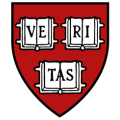

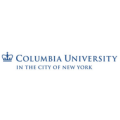


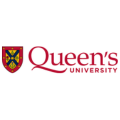
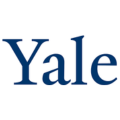


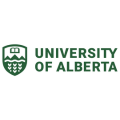


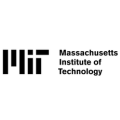

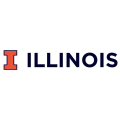



Contact Us
If you are interested in our products, services or partnering with us, please feel free to contact us by filling out this form:
or email us at sales@gaotek.com
